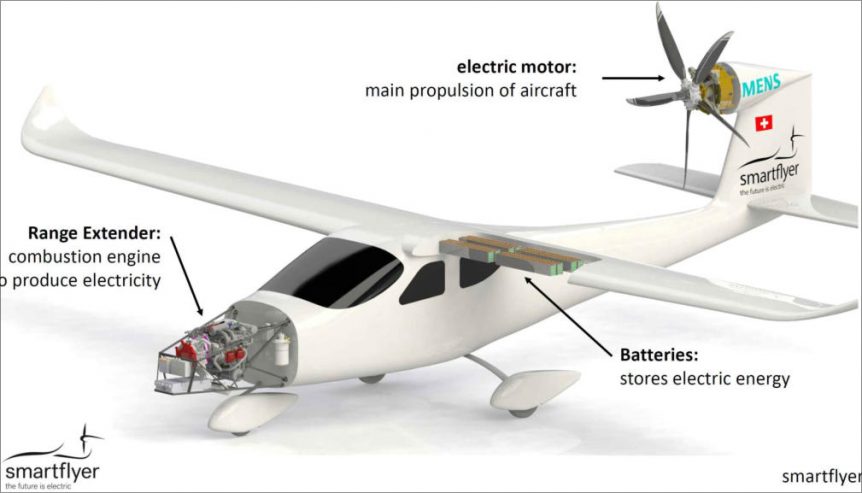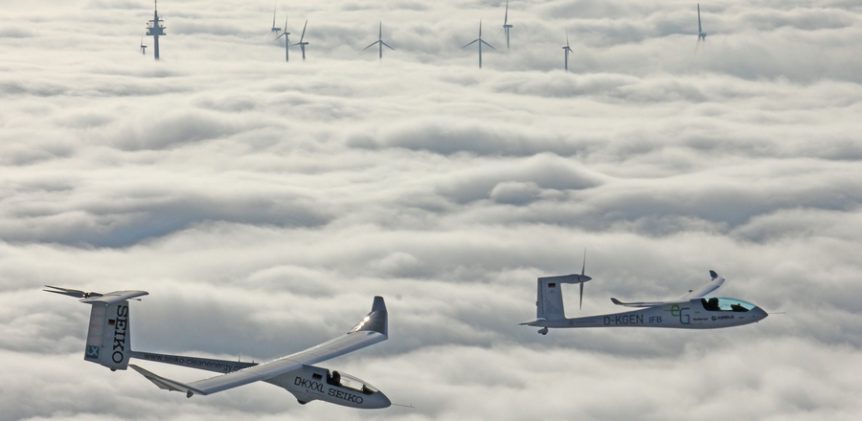Only a design concept just a few years ago, the SmartFlyer hybrid aircraft is swiftly approaching full-fledged reality. CEO Rolf Stuber started the project and has been joined by Daniel Wenger, who shares design honors with him; and eleven others with a dazzling array of skills and degrees. Every member of the team has built, flies or has flown in everything from gliders to “heavy” airliners. The team’s goal is to craft a “proof of concept” airplane which will fly by 2021. Facebook Updates Recent Facebook photographs show a nose section with a Rotax 914 engine driving a special generator, yards of orange cable connecting the big pieces, and a set of formers for what will probably be the fuselage mold. smartflyer-challenge, 2nd edition this weekend visit the second fly-in for electric aircraft this weekend in Grenchen, Switzerland. The smartflyer team will be there. More info on https://www.smartflyer-challenge.com/ Posted by Smartflyer-aircraft on Monday, August 27, 2018 Pilots and passengers will …
e-Genius Gets Around Quickly, Inspires Others
Birds of the Same Tail Feather Configuration Prof. Dipl.-Ing. Rudolf Voit-Nitschmann (emeritus) had a lot to do with designing the 1996 Icare II solar-powered sailplane and the 2011 e-Genius. Icare II set several world records in its 20 years, most under the guidance of pilot Klaus Ohlmann. e-Genius won the award for being the quietest airplane at the Green Flight Challenge held in Santa Rosa, California, and was a close second to Pipistrel’s G4 in passenger miles per gallon (equivalent) energy use. Dipl.-Ing. Voit-Nitschmann was kind enough to explain to your editor how the propeller center came to be at the top of the tail on e-Genius. It’s a similar configuration to that on the Icare II*, and one he had found to provide the greatest undisturbed air to the propeller and the least added friction drag, since only the lower part of the blade crossed in front of the upper part of the vertical fin and rudder. This configuration …
G4 to HY4 – Swapping Batteries for Fuel Cells
The University of Stuttgart and Pipistrel started down similar paths around 2007, with the Stuttgarters attempting a hydrogen-powered two-seat aircraft, the Hydrogenius; and Pipistrel developing a self-launching craft with either two-stroke power or an equivalent electric motor. The two groups came to rely on one another, with hydrogenius using the forward fuselage and wings of the Taurus G2 with hydrogen tanks in the fuselage and a Sineton motor on the tail. On February 27, 2008, Professor Rudolf Voit-Nitschmann, the father of the solar powered aircraft Icare 2 and the unofficial World Record holder for distance flown in a solar powered aircraft, along with dipl. ing. Steffen Geinitz and dipl. ing. Len Schumann met with Pipistrel leaders, including CEO Ivo Boscarol and designer Tine Tomazic at the company headquarters in Ajdovscina. Because the area aft of the wing was different for the Pipistrel G2 and Hyrogenius, the fuselages looked entirely different. Hydrogenius used the volume behind the wing to stow the H2 …


